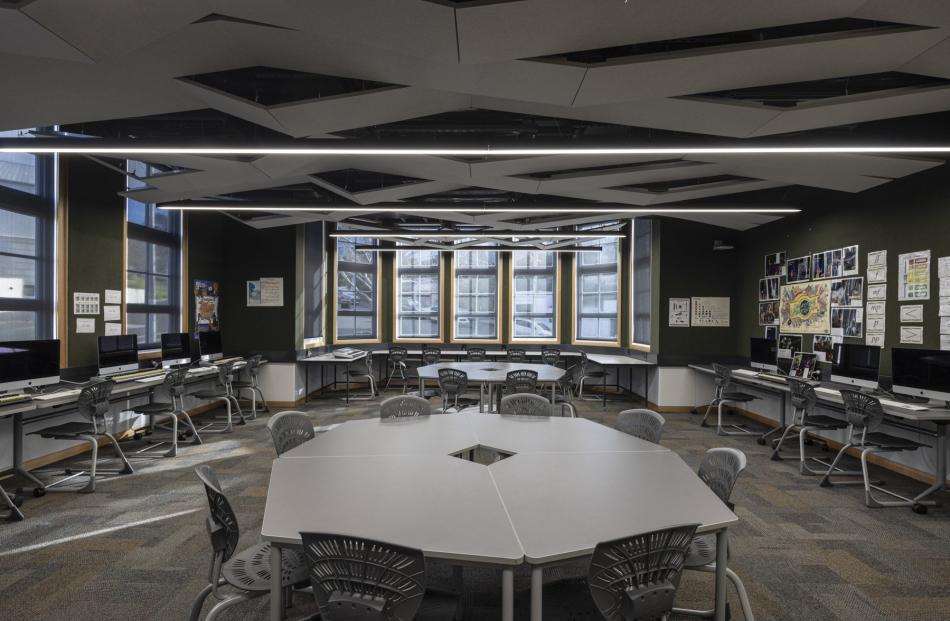A sympathetic restoration of the former Dunedin School of Art means it is once again a training ground for budding artists.
The 1937 building on the corner of Tennyson St and York Pl is the new arts block for Trinity Catholic College, and will be officially opened next week.
Founded in 1870, the Dunedin School of Art became part of King Edward Technical College in 1921 and operated from the red brick college on the corner of Stuart St and York Pl until this purpose-built school opened nearby.
Together, the former college and art school are listed as a category 1 historic place.
According to a Heritage New Zealand report, the art school’s distinguished students and teachers founded New Zealand modernism, changing the country’s artistic and cultural story. They included Colin McCahon, Doris Lusk, R.N. Field and Gordon Tovey. Prior to the new school opening, Toss Woollaston and Rodney Kennedy had also attended art classes at the college.
The new school, designed by government architect John Mair, was a simple, elegant building framed in wood with a concrete basement and plaster cladding. Inside, there was a tiled entrance and nine large classrooms.

Taken over by Otago Polytechnic in the 1960s, the former art school was bought for Kavanagh College (now Trinity Catholic College) in late 2010.
Catholic Diocese of Dunedin property manager Craig Paterson said it was a logical purchase given Kavanagh’s main campus was directly across the road and after that, it was a matter of the diocese "biding its time until the finances were right for an upgrade".
In the interim, the renamed Pompallier Arts Block became drama rooms and general teaching spaces.
The 18-month redevelopment was helped by the solid nature of the building, Mr Paterson said.
The art school was erected by the Public Works Department with government funding, and the fact that less than $100,000 of the $4.5million refurbishment budget had to be spent on structural improvements was a reflection of how well it was built.
Project director Matt Mitchell, of McCoy & Wixon Architects, said planning began in early 2018. The initial work focused on a music suite, but this was soon extended to include art and drama spaces.
After looking at various options, it was decided to realise the potential of the under-utilised basement in parallel with the introduction of a new lift and stairs to meet accessibility requirements.
The concrete-enclosed basement had an asbestos-lined boiler and black, soot-laden walls, but its acoustic properties made it ideal for a music recording studio and practice room.
Further music rooms were located on the middle level, with two art rooms and a photography studio on the top floor.


















